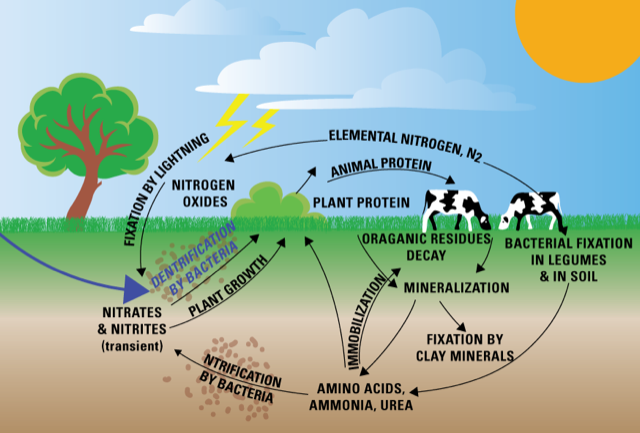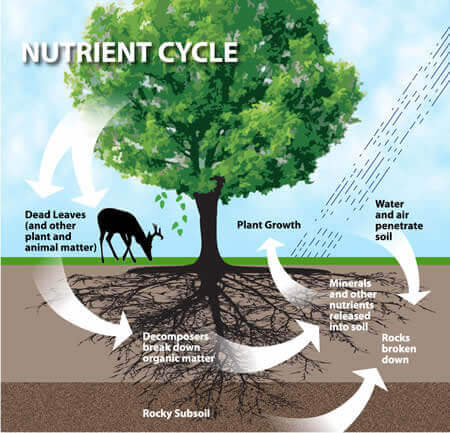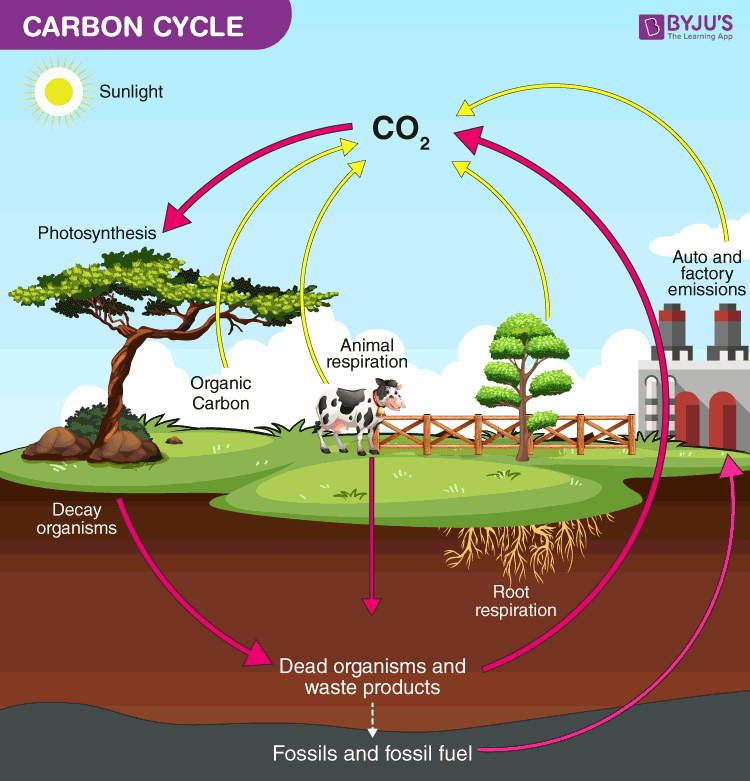Explain the Different Types of Nutrient Cycles
The following points highlight the top five types of biochemical cycle existing in ecosystem. Please list three different types of human activities that may affect nutrient cycles.

Nutrient Cycle Definition Examples And Importance
Phosphorus cycle and sulphur cycle.
. Geochemical between ecosystems biogeochemical within a ecosystem and biochemical within an organism. Up to 24 cash back Matter moves in a different way than how energy moves. Many human activities have a significant impact on the nitrogen cycle.
Three major types of nutrient cycle. Animal releases carbon dioxide into the air. In the hydrologic cycle there occurs an interchange of compounds between the earths surface and the atmosphere via.
There are two major types of biogeochemical cycles. Briefly oultine the nitrogen cycle. Let us have a look at each of these biogeochemical cycles in brief.
Nutrients occur as gas or vapour. Carbon is considered one of the main constituents of all living organisms. In high amounts these nutrients are detrimental to aquatic ecosystem health because elevated nutrients promote excessive growth or blooms of algae and other nuisance.
- nitrogen gas in the atmosphere in converted into ammonia via nitrogen fixation - this ammonia forms ammonium ions that are turned into nitrites and then nitrates via nitrification. Biogeochemical cycles are pathways by which nutrients flow between the abiotic and abiotic compartments of the Earth. Our ecosystem is maintained by the cycling energy and nutrients obtained from different external sources.
Oxygen is the essential. These are the biogeochemical cycles in which the reservoir pool is generally lithosphere. Nitrogen and phosphorus are plant essential nutrients that are currently in excess in many aquatic ecosystems due to runoff from urban and agricultural areas.
Gascons Nutrient Cycle 3. 1 Water Cycle or Hydrologic Cycle 2 Carbon-Cycle 3 Nitrogen Cycle 4 Oxygen Cycle. The water from the different water bodies evaporates cools condenses and falls back to the earth as rain.
For example carbon cycle nitrogen cycle etc. The latter may include all the three major types of cycles ie hydrologic cycles gaseous nutrient cycles and sedimentary nutrient cycles. Comparatively quick and fast.
Many of the nutrients that living things. Wind transports nutrients in dust and rain from one biogeocenose to another over distances that vary from as little as 100 meters to as much. How have human activities influenced the nitrogen and or phosphorus cycles.
Nitrates and phosphates are two of these nutrients. Plant takes in carbon dioxide. Please list three different types of human activities that may affect nutrient cycles.
Thus unlike the one-way flow of energy matter is recycled within and between ecosystemsElements that pass through from one organism to the other in closed loops is called biogeochemical cyclesThis cycle involves biological process geological process and chemical process. Reservoir is located in the earths crust. Gaseous cycles- Reservoirs in the gaseous biogeo cycle are air or ocean and include carbon oxygen and nitrogen.
These are the biogeochemical cycles in which the reservoir pool is the atmosphere or hydrosphere. Ecosystems rely on biogeochemical cycles. Give a bio molecule that contains these nutrients.
Types of Biogeochemical Cycles. The cycle of energy is based on the flow of energy through different trophic levels in an ecosystem. Gaseous cycles Includes Carbon Oxygen Nitrogen and the Water cycle.
Animal eats sugar molecule. The movement of those elements and inorganic compounds that are essential to life can be conveniently designated as the nutrient cycling. Exchanges of chemicals between ecosystems.
The process is regulated by the food web pathways previously presented which decompose organic matter into inorganic nutrients. Living organisms cannot consume nitrogen directly. At the first trophic level primary producers use solar energy to produce organic material.
The types of nutrient cycles largely fall under Sedimentary cycles- Reservoir in the sedimentary biogeo cycle is Earths crust and includes earth-bound elements such as phosphorus calcium iron and sulfur among others. Nutrient cycles occur within ecosystems. They provide a source of nitrogen and phosphorus for cells.
Types of Nutrient Cycles 1. Carbon cycle and nitrogen cyole. Sedimentary Nutrient Cycle 4.
Nitrogen is an essential component of life. Reservoir is the atmosphere. Energy Flow in Ecosystem.
Animal releases carbon dioxide into the air. Sedimentary cycles Includes Sulphur Phosphorus Rock cycle etc. Explain examples of the three types of nutrient cycles 1 gaseous reservoir is from BIO 105 at North Carolina State University.
This is how cycles are possible. Burning fossil fuels application of nitrogen-based fertilizers and other activities can dramatically increase the amount of biologically available nitrogen in an ecosystem. Some of the major biogeochemical cycles are as follows.
Upwelling is a process were water moves from deeper parts of the sea to the surface. The producers of an ecosystem take up several basic inorganic nutrients from their non-living environment. Nutrient is non gaseous.
Nutrient cycles that we will examine in this section include water carbon oxygen and nitrogen cycles. Plant uses carbon dioxide to make sugar molecules. These materials get transformed into the bio mass of the producers.
The abiotic portion of the Earth includes the lithosphere the geological component of the Earth and the hydrosphere the Earths water. Human activities are changing the rates of cycling of certain nutrients which may result in pollution and the depletion of natural resources. This water contains a lot of nutrients from the remains of dead organisms.
IiNutrient cycles are of two types. Plant uses carbon dioxide to make sugar molecules.

How Can We Restore Earth S Nutrient Cycles Greenpeace International

Carbon Cycle Nitrogen Cycle Phosphorus And Sulphur Cycle Pmf Ias

Comments
Post a Comment